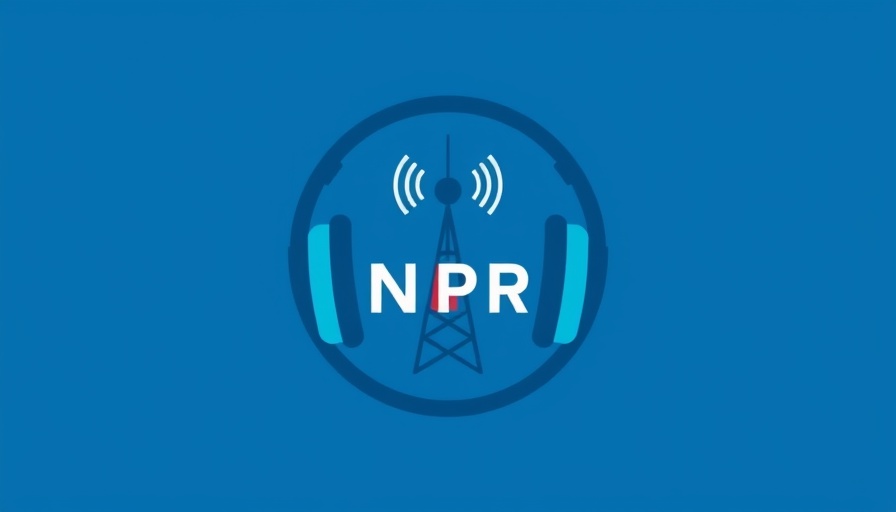
Understanding the Screens and Sleep Debate
In an age dominated by technology, the constant presence of screens has sparked debates about their impact on sleep quality. Common wisdom suggests that the blue light emitted from devices like smartphones and computers disrupts our circadian rhythms and makes it harder for us to fall asleep. However, recent research challenges this notion, indicating that the effect might be less severe than previously thought. In fact, a study mentioned in NPR's Body Electric newsletter states that screens may only delay sleep onset by a mere ten minutes. This lighter impact encourages a reevaluation of how we perceive our nighttime routines.
Exercise: The Unsung Hero of Sleep Quality
If screen time isn't the bedtime villain we thought it was, then what truly matters for restorative sleep? Numerous studies underscore the significance of physical activity. For example, a comprehensive review published in Nature establishes a clear link between exercise and improved sleep quality. The study focused on female adults with insomnia and revealed that those who engaged in at least half an hour of daily exercise averaged 15 additional minutes of sleep compared to their sedentary counterparts. This insight speaks volumes for CEOs and business professionals—two demographics often linked with sedentary lifestyles. Making time for movement may not just lead to better sleep but can enhance overall productivity.
The Movement-to-Sleep Ratio: Discovering Personal Metrics
As individuals, developing a personalized understanding of our movement can provide a blueprint for better rest. NPR's Fio Geiran shared her personal experience tracking her daily step count, pointing out that her sleep patterns correlated strongly with her physical activity levels. This 'movement-to-sleep ratio' illustrates a striking truth—being less active often leads to sleeplessness. For business leaders who often juggle demanding schedules, finding their magic number of steps (the threshold beyond which quality sleep improves) could prove immensely beneficial.
Bringing Balance to Screen Time and Exercise
The reality is that screens are an integral part of our professional and personal lives, especially for those working in tech and marketing. Rather than vilifying screen use before bed, a balanced approach may serve us better. Implementing screen time boundaries can help structure our habits. Experts suggest designating at least one hour before bedtime for transition activities—such as reading or light stretches—to help signal to our bodies that it’s time to wind down. This strategy allows us to enjoy our screens while mitigating their potential impact on our sleep.
Consider Your Stressors: Emotional Health and Sleep
Moreover, we must not overlook psychological factors that can impede sleep. The fast-paced world of business often comes with significant stress, which can manifest in difficulty falling asleep or disruptions during the night. Addressing mental health is crucial. Techniques such as mindfulness, meditation, and journaling can help alleviate stress, subsequently improving sleep quality. For professionals, creating a dedicated space and time for these practices might not only reduce stress but ultimately enhance work performance as well.
Future Trends: Combining Health Tech and Sleep Research
Looking ahead, innovations in health technology could play a pivotal role in how we monitor and improve our sleep quality. Wearable devices that track sleep patterns and physical activity are becoming increasingly sophisticated, providing users with insights that were previously unattainable. Such tech can empower managers and executives to take proactive measures in balancing their screen time and physical activity, improving both work productivity and personal wellbeing.
Conclusion: Taking Charge of Your Sleep
The relationship between screens and sleep is far from straightforward, yet it's clear that exercise plays a critical role in enhancing sleep quality. As business professionals, understanding how to navigate this landscape can lead not only to better rest but also to improved performance at work. Developing a tailored approach to screen use—combined with prioritizing physical activity and mental well-being—stands to transform our nightly routines into a more restorative experience.
As we move forward, consider assessing your own movement-to-sleep ratio. Perhaps it’s time to shift your perspective on screens and envision a harmonious blend that boosts your productivity during waking hours while ensuring restful nights. Make that commitment today to better manage your health and productivity.
 Add Row
Add Row  Add
Add 




 Add Row
Add Row  Add
Add 

Write A Comment